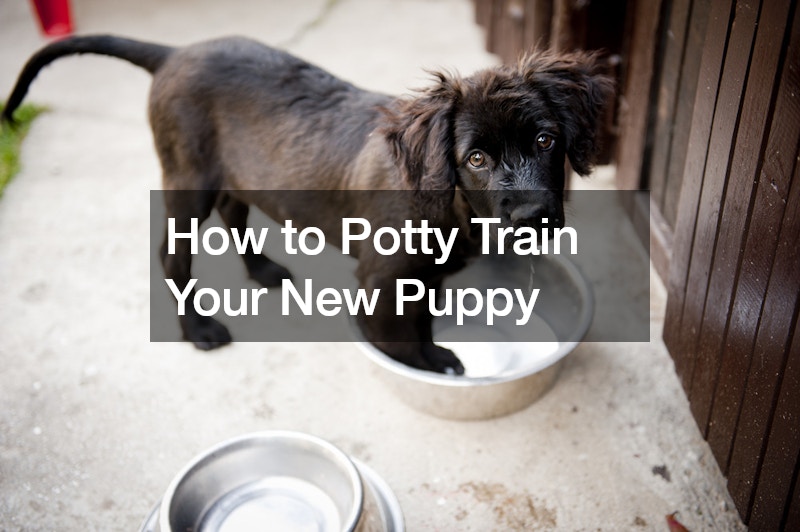
Puppy training encompasses a myriad of skills, and one of the fundamental aspects is potty training. Bringing a new puppy into your home is an exciting time, but it also comes with the responsibility of teaching them where and when to relieve themselves appropriately. Potty training, also known as house training, requires patience, consistency, and a clear strategy to ensure success. In this guide, we will delve into the essential steps to effectively potty train your new puppy, drawing insights from expert advice and proven techniques.
1. Establish a Consistent Feeding Schedule:
Consistency is key when it comes to potty training. Start by establishing a regular feeding schedule for your puppy.
This routine not only helps regulate their bowel movements but also allows you to anticipate when they will need to go outside. Most puppies will need to relieve themselves shortly after eating, so feeding them at consistent times each day can aid in predicting their potty schedule.
2. Choose High-Quality Puppy Food:
The type of food you feed your puppy can influence their digestion and, consequently, their potty habits. Opt for high-quality puppy food that provides the necessary nutrients without unnecessary fillers. Consult your veterinarian or a puppy trainer for recommendations on the best diet for your furry friend. Additionally, consider signing up for automatic pet food delivery services, such as petflow.com, to ensure you never run out of essentials.
3. Control Your Puppy’s Environment:
Controlling your puppy’s environment is crucial during the potty training process. Use baby gates or a puppy playpen to confine them to a designated area when unsupervised. This helps prevent accidents and allows you to closely monitor their behavior. When you cannot directly supervise your puppy, consider using a crate to keep them safe and secure. Introduce the crate gradually and make it a positive and comfortable space for your puppy.
4. Leash Training for Supervision:
Attach a leash to your puppy when indoors to maintain supervision and prevent them from wandering off to eliminate in hidden spots. This tethering method keeps them within sight and allows you to intervene promptly if they show signs of needing to go potty. A puppy trainer can offer guidance on proper leash training techniques to ensure both you and your puppy are comfortable with the arrangement.
5. Implement a Regular Potty Break Routine:
Take your puppy outside for potty breaks frequently, especially after meals, playtime, naps, and waking up in the morning. Use a designated potty area in your yard and encourage your puppy to eliminate there. Be patient and wait for them to finish, then praise and reward them lavishly. Consistent reinforcement helps them associate outdoor potty breaks with positive experiences.
6. Use Positive Reinforcement:
Positive reinforcement is a powerful tool in potty training. Whenever your puppy eliminates in the designated potty area, shower them with praise, treats, or verbal cues. Positive reinforcement strengthens the desired behavior and motivates your puppy to repeat it in the future. Conversely, avoid punishing or scolding your puppy for accidents indoors, as this can create fear and confusion.
7. Be Prepared for Setbacks:
Potty training is a gradual process, and setbacks are inevitable. Your puppy may have occasional accidents indoors, especially during the initial stages of training. Instead of becoming frustrated, remain patient and consistent in your approach. Clean up accidents promptly using enzymatic cleaners to remove any lingering odor, which could attract your puppy to repeat the behavior in the same spot.
8. Seek Guidance from a Puppy Trainer:
If you encounter challenges or need personalized advice, consider seeking guidance from a professional puppy trainer. A qualified trainer can assess your puppy’s behavior, identify areas for improvement, and provide tailored strategies to address specific issues. Their expertise and experience can significantly expedite the potty training process and set you and your puppy up for success.
Dealing with Accidents
Accidents are an inevitable part of the potty training process, and how you handle them can significantly impact your puppy’s learning experience. Here are some effective strategies for dealing with accidents indoors:
Stay Calm: It’s essential to remain calm and composed when you discover an accident. Avoid showing frustration or anger, as this can confuse or frighten your puppy.
Act Quickly: As soon as you notice an accident, act promptly to clean it up. The longer the mess sits, the more challenging it will be to remove the scent, which could attract your puppy to repeat the behavior in the same spot.
Avoid Punishment: Never punish your puppy for having an accident. Punishment, such as yelling or rubbing your puppy’s nose in the mess, is not only ineffective but can also damage the trust and bond between you and your puppy. Instead, focus on positive reinforcement to encourage desired behaviors.
In conclusion, potty training your new puppy requires dedication, consistency, and positive reinforcement. By establishing a regular routine, controlling your puppy’s environment, and using effective training techniques, you can teach them where and when to potty appropriately. Remember to be patient, celebrate successes, and seek assistance from a puppy trainer when needed. With time and persistence, you and your puppy will master the art of potty training, strengthening your bond along the way.
.






